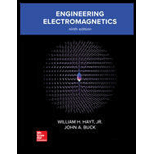
Concept explainers
The surfaces
(a)
The enclosed volume.
Answer to Problem 1.23P
The enclosed volume is 6.28
Explanation of Solution
Given information:
For the closed surface,
Concept used:
Volume=
Calculation:
Substituting the values in equation (1), we get
Conclusion:
Therefore, the enclosed volume is 6.28.
(b)
Total area of the enclosing surface.
Answer to Problem 1.23P
Total area of the enclosing surface is 20.7.
Explanation of Solution
Given information:
For the closed surface,
Concept used:
Area=
Calculation:
Substituting the values in equation (2), we get
Further integrating we have,
Conclusion:
Therefore, the total area of the enclosing surface is 20.7
(c)
Total length of the twelve edges of the surfaces.
Answer to Problem 1.23P
Total length of the twelve edges of the surfaces is 22.4.
Explanation of Solution
Given information:
For the closed surface,
Concept used:
Calculation:
From equation (3), we get
Conclusion:
Therefore, the total length is 22.4.
(d)
The length of the longest straight line that lies entirely within the volume.
Answer to Problem 1.23P
The length of the longest straight line that lies entirely within the volume is 3.21.
Explanation of Solution
Given information:
For the closed surface,
Concept used:
Calculation:
The longest straight line will be between the points
Now converting A and B to Cartesian co-ordinates,
For A ,
Therefore,
For B ,
Therefore,
So, from equation (4),
Conclusion:
Therefore, the total length is 3.21.
Want to see more full solutions like this?
Chapter 1 Solutions
Engineering Electromagnetics
- A ring and a disk both are centered at (7, 6, 5) and are both lying on the plane y = 6. The ring has a radius of 7 m, while the disk has a radius of 9 m, so that the ring is around the disk. Determine the magnitude of the electric field in kV/m at point (7, -7, 5) if the ring has a total charge of -5 mC and the disk has a total charge of 7 mC. All coordinates are measured in meters.arrow_forward1)An electric dipole of 100 az pC.m is located at the origin. Find V and E at point (0, 0, 10) 2) In a certain region, the electric field is given by D = 2p(z+1) cos o a, -p(z + 1) sino ap + pacos o az uC/m² a) Find the charge density. b) Calculate the total charge enclosed by the volume 0. 3) A potential is given by V=2(x+1)^2(y+2)^2(z+3)^2 V in free space. Calculate 1) potential 2)Ebar 3) Dbar 4) Qv at point A(1,2,3). Also find work done in moving a 10uc charge from A(1,2,3) to (-1,-3,3).arrow_forward4) Develop an electromagnetic field environment equation for the electric field intensity, E provided the electric potential at a fixed radius from the point charge kept at the origin is given as V=Q/(4πɛ˳r), after developing the equation compute the vector value of electric field intensity for a Charge density of pv =10Nc/m3 , provided dv=r² sinθ dr dθ d∅ , and the distance r in magnitude is given as 1m from the origin.arrow_forward
- Calculate D in rectangular coordinates at point P(3, 6, -1) produced by a uniform line charge ρ= 15mC/m on the y-axis.arrow_forwardA disk of radius a in the xy plane carries surface charge of density ρs = ρs0 /ρ C/m2 where ρs0 is a constant. Find the electric field intensity E everywhere on the z axis.arrow_forwardQ1. In free space, there are 2 concentric spherical surfaces with radii a and b. There is a constant volume charge density between 2 surfaces such that:a) Find the electric potential everywhere using Poisson’s equation. b) Find the electric field vector everywhere using Poisson’s equation.arrow_forward
- 2. A point C is in the Cartesian coordinate system at (2, −3, 6). On location B (−2, 3, −6) has a charge of QB of 55 mC. b) Calculate the electric flux density at point C, which is DC, produced by charge QB.arrow_forward6. If D=3y²a, + 3x²ya, + 5a, C/m², find the total charge enclosed within the region 0 < x,y,z <2 by evaluating one or more surface integrals.arrow_forwardIn free space, there are 2 concentric spherical surfaces with radii a and b. There is a constant volume charge density between 2 surfaces such that: ρ= { 0; ρb [ ? ?3 ] a) Find the electric potential everywhere using Poisson’s equation. b) Find the electric field vector everywhere using Poisson’s equationarrow_forward
- There are point loads Q1= 4, Q2=9 and Q3=4 at points A(-7,0), O(0,0) and B (4,0) in the OXY plane, respectively. Write the value of the y-component of the electric field in terms of ke numerically at the point P(0, 13) on the-axis.arrow_forwardA sheet of charge , ρs = 2nC/m2 is present at the plane x =3 infree space, and a line charge , ρL = 20nC is located at x=1, z=4.Find the magnitude of the E at the origin. Complete solution.arrow_forwardThere are point loads ,Q1 = 5, Q2 = 8 and Q3 = 6 at points A(-8,0), O(0,0) and B (6,0) in the OXY plane, respectively.Write the value of the x-component of the electric field in ke numerically at the point P(0, 10) on the-axis.arrow_forward
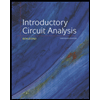 Introductory Circuit Analysis (13th Edition)Electrical EngineeringISBN:9780133923605Author:Robert L. BoylestadPublisher:PEARSON
Introductory Circuit Analysis (13th Edition)Electrical EngineeringISBN:9780133923605Author:Robert L. BoylestadPublisher:PEARSON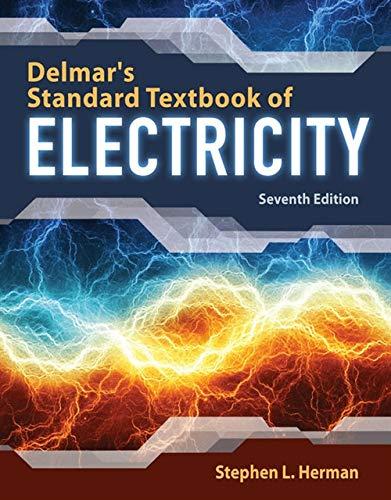 Delmar's Standard Textbook Of ElectricityElectrical EngineeringISBN:9781337900348Author:Stephen L. HermanPublisher:Cengage Learning
Delmar's Standard Textbook Of ElectricityElectrical EngineeringISBN:9781337900348Author:Stephen L. HermanPublisher:Cengage Learning Programmable Logic ControllersElectrical EngineeringISBN:9780073373843Author:Frank D. PetruzellaPublisher:McGraw-Hill Education
Programmable Logic ControllersElectrical EngineeringISBN:9780073373843Author:Frank D. PetruzellaPublisher:McGraw-Hill Education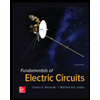 Fundamentals of Electric CircuitsElectrical EngineeringISBN:9780078028229Author:Charles K Alexander, Matthew SadikuPublisher:McGraw-Hill Education
Fundamentals of Electric CircuitsElectrical EngineeringISBN:9780078028229Author:Charles K Alexander, Matthew SadikuPublisher:McGraw-Hill Education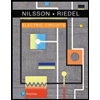 Electric Circuits. (11th Edition)Electrical EngineeringISBN:9780134746968Author:James W. Nilsson, Susan RiedelPublisher:PEARSON
Electric Circuits. (11th Edition)Electrical EngineeringISBN:9780134746968Author:James W. Nilsson, Susan RiedelPublisher:PEARSON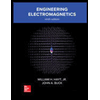 Engineering ElectromagneticsElectrical EngineeringISBN:9780078028151Author:Hayt, William H. (william Hart), Jr, BUCK, John A.Publisher:Mcgraw-hill Education,
Engineering ElectromagneticsElectrical EngineeringISBN:9780078028151Author:Hayt, William H. (william Hart), Jr, BUCK, John A.Publisher:Mcgraw-hill Education,





